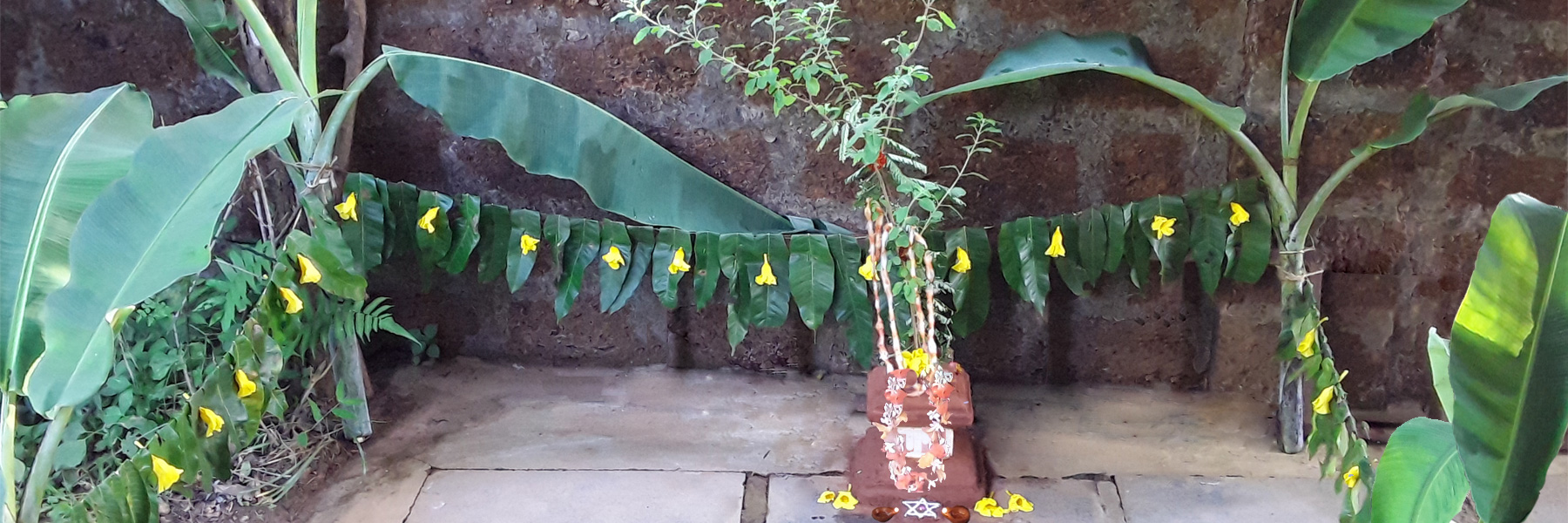History
There are many legends about Tulasi in mythology. According to one story, Tulasi was Brinda in her previous birth and the most ardent devotee of Vishnu. She was the daughter of Asura king Kaalanemi (Ravana’s uncle) and was married to a demon named Jalandhar.
Because of her devotion to Vishnu, Brinda had enormous amount of yogic powers. Her spiritual strength, multiplied Jalandhar's strength and he became unconquerable in all three worlds. Jalandhar was egoistic and had the compulsion to acquire everything that he desired. This led to fierce battle between devas (gods) and asuras (demons). As devas could not defeat powerful Jalandhar they requested Vishnu to intervene. Though Brinda was a great devotee of Vishnu, he agreed to help due to a threat posed by Jalandhar.
Brinda would sit and perform pooja (prayer) whenever Jalandhar went for battle. She never got up from the pooja till he came back from the battle. This time too, she was busy performing pooja for the victory and welfare of her husband Jalandhar. At the same time Vishnu appeared in front of Brinda taking the form of Jalandhar. Seeing him Brinda stopped her pooja and got up. It was at that moment, without his wife’s prayers to protect him; Jalandhar was killed by Shiva in the battlefield.
Vishnu took his original form, and Brinda cursed him to turn into the very stone. Without protest Vishnu took his punishment and became stone – Saligram. The whole universe was unbalanced and all the devas (gods) prayed Brinda to take back her curse. Brinda took back her curse, and breathed her last. From her ashes sprang a plant. Vishnu names that plant Tulasi and said that his Saligram form would always be worshipped with Tulasi. Thus the tradition of honoring Tualsi by performing Tulasi vivah was started.
Though in the above story Tulasi is married to Saligram form of Vishnu, in our custom it is Krishna form of Vishnu who the Tulasi is married to.




